Phone Comparisons: Samsung Galaxy S25 Vs Google Pixel 9 Pro
Contents
Both Samsung and Google have compact high-end phones to offer, and both models are quite compelling. In this article, we’ll compare them, we’ll be comparing the Samsung Galaxy S25 vs Google Pixel 9 Pro. There are some similarities between them, but for the most part, these two smartphones are quite different. One thing is for sure, if you’re tired of large-format phones, and you’re in the market for a flagship-grade phone, these are the two phones you should be considering.
We will first compare their specifications, as we usually do in comparison articles. Following that, we’ll compare them across a number of other sections, including design, display, performance, battery, cameras, and audio. Before we begin, do note that the Galaxy S25 is the cheaper of the two phones.
Specs
Samsung Galaxy S25 vs Google Pixel 9 Pro, respectively
– Screen size:
6.2-inch Dynamic AMOLED 2X (flat, 120Hz, 2,600 nits max brightness)
6.3-inch QHD+ OLED (flat, adaptive 120Hz, HDR, 3,000 nits max brightness)
– Display resolution:
2340 x 1080
2856 x 1280
– SoC:
Qualcomm Snapdragon 8 Gen Elite for Galaxy
Google Tensor G4
– RAM:
12GB (LPDDR5X)
16GB (LPDDR5X)
– Storage:
128GB/256GB/512GB (UFS 4.0)
128GB/256GB/512GB/1TB (UFS 3.1)
– Rear cameras:
50MP (wide, f/1.8 aperture, 1/1.56-inch sensor, OIS, Dual Pixel PDAF), 12MP (ultrawide, 120-degree FoV, f/2.2 aperture, 1/2.55-inch sensor, 1.4um pixel size), 10MP (telephoto, f/2.4 aperture, OIS, PDAF, 1/3.94-inch sensor, 3x optical zoom)
50MP (wide, f/1.7 aperture, 1.2um pixel size, OIS, EIS), 48MP (ultrawide, f/1.7 aperture, 123-degree FoV), 48MP (periscope telephoto, f/2.8 aperture, OIS, EIS, 5x optical zoom)
– Front cameras:
12MP (wide, f/2.2 aperture, Dual Pixel PDAF, 1/3.2-inch sensor size, 22mm lens)
42MP (f/2.2 aperture)
– Battery:
4,000mAh
4,700mAh
– Charging:
25W wired, 15W wireless (Qi2 Ready), 4.5W reverse wireless (charger not included)
27W wired, 21W wireless (Pixel Stand), 12W Qi wireless, 5W reverse wireless (no charger)
– Dimensions:
146.9 x 70.5 x 7.2 mm
152.8 x 72 x 8.5 mm
– Weight:
162 grams
199 grams
– Connectivity:
5G, LTE, NFC, Wi-Fi, USB Type-C, Bluetooth 5.4/5.3
– Security:
In-display fingerprint scanner (ultrasonic), facial scanning
Ultrasonic in-display fingerprint scanner
– OS:
Android 15 with One UI 7
Android 14 (upgradable)
– Price:
$799.99+
$999+
– Buy:
Samsung Galaxy S25 (Samsung.com)
Google Pixel 9 Pro (Best Buy, Google Store)
As you can see, these two devices have a rather similar shape, though the Galaxy S25 is the smaller of the two. It has a slightly smaller display, but notably thinner bezels, which is why the size difference is as notable as it is. The Galaxy S25 is notably shorter, a bit narrower, and a tad bit thinner than the Google Pixel 9 Pro. It is also over 30 grams lighter than the Google Pixel 9 Pro, by the way.
Both of these phones are made out of aluminum and glass, while both of them also have flat frames. The frame on both smartphones is slightly rounded towards the edges, to make them more comfortable to hold. Their backplates are flat, as are their front sides. You’ll also notice a display camera hole centered up top. The one on the Galaxy S25 is smaller, and it’s also closer to the top of the display. The bezels are uniform on both phones.
They have considerably different-looking rear camera setups
Both devices include their power/lock and volume up and down buttons on the right-hand side. The thing is, the power button on the Pixel 9 Pro sits above the volume up and down buttons, while it’s the other way around on the Galaxy S25. If we flip them around, you’ll notice notably different camera setups. The Galaxy S25 has three vertically aligned cameras in the top-left corner, which are not a part of the same camera island. The ones on the Pixel 9 Pro sit inside a pill-shaped camera island which is horizontally aligned in the upper portion of the phone’s back.
Both of these phones come with an IP68 certification for water and dust resistance. Both of them are actually quite slippery, while the Galaxy S25 is easier to use with one hand, as it’s notably smaller and lighter.
Samsung Galaxy S25 vs Google Pixel 9 Pro: Display
The Samsung Galaxy S25 features a 6.2-inch fullHD+ (2340 x 1080) Dynamic LTPO AMOLED 2X display. That panel is flat, and it supports HDR10+ content. It also supports an adaptive refresh rate from 1 to 120Hz. That panel’s peak brightness is 2,600 nits, while the screen-to-body ratio is at around 91%. The display aspect ratio is 19.5:9, while the display is protected by the Gorilla Glass Victus 2 from Corning.

The Google Pixel 9 Pro, on the other hand, has a 6.3-inch 2856 x 1280 LTPO OLED display. That panel is also flat, and it offers an adaptive refresh rate from 1 to 120Hz. The panel does support HDR10+ content, and it has a peak brightness of 3,000 nits. The screen-to-body ratio is at around 87%, while the display aspect ratio is 20:9. The Gorilla Glass Victus 2 is here to protect the display.
Both of these displays are actually really good. They are more than sharp enough, even though the Pixel 9 Pro is technically sharper. They’re also vivid, have good viewing angles, and the touch response is also good. The blacks are as deep as you’d expect them to be, and both displays get bright enough when you need them too. Neither of these panels supports high-frequency PWM dimming, though, if you care about that. Chances are you’ll be happy regardless of which panels you end up using.
Samsung Galaxy S25 vs Google Pixel 9 Pro: Performance
The Snapdragon 8 Elite for Galaxy, from Qualcomm, fuels the Galaxy S25. That is an overclocked variant of the Snapdragon 8 Elite, the company’s most powerful chip. It’s a 3nm processor, by the way. Samsung combines that with 12GB of LPDDR5X RAM inside the Galaxy S25. UFS 4.0 flash storage is also included here.
The Google Pixel 9 Pro, on the flip side, is fueled by the Google Tensor G4 processor. That is Google’s 4nm chip, and it’s inferior to the Snapdragon 8 Elite for Galaxy, but it’s tailor-made for Pixel devices. This smartphone comes with 16GB of LPDDR5X RAM, and it offers UFS 3.1 flash storage. Neither phone supports storage expansion, by the way.
Yes, the Samsung Galaxy S25 is technically a more powerful smartphone. Not only does it have a more powerful processor, but it has faster storage too. If you use the two phones side by side, the Galaxy S25 will feel a bit snappier. The thing is, both of them work great in day-to-day tasks, without any lag. The Samsung Galaxy S25 will be a better choice for gaming, though, if you’re playing high-end games. Chances are most of you will be happy with the performance from either of these two smartphones, as they’re both great in that regard.
Samsung Galaxy S25 vs Google Pixel 9 Pro: Battery
There is a 4,000mAh battery included inside the Samsung Galaxy S25. The Google Pixel 9 Pro, on the flip side, has a 4,700mAh battery on the inside. Both of those are Li-Ion batteries by the way, neither company used a silicon-carbon pack. What’s interesting is that the battery life here is comparable. The Galaxy S25 does not really lag behind the Pixel 9 Pro all that much, both phones offer really great battery life, especially if you consider that smaller devices usually don’t deliver in the battery department.
We’ve managed to get some really great battery life numbers from the Galaxy S25 during our review period, despite the fact its battery capacity is not all that impressive, even if we consider its display size. Both of these smartphones can get you through the day on a single charge, even if you’re a more demanding user. Getting over 7 hours of screen-on-time was not a problem for us, on either phone, and there was always some juice left at that point. You can honestly push them even higher. Your mileage may vary, though, of course.
The Samsung Galaxy S25 supports 25W wired, 15W wireless (Qi2 Ready), and 4.5W reverse wireless charging. The Pixel 9 Pro, on the other hand, supports 27W wired, 21W wireless (with Pixel Stand), 12W Qi wireless, and reverse wireless charging. Neither phone is particularly impressive when it comes to fast charging. They also don’t come with a charger included in the retail box.
Samsung Galaxy S25 vs Google Pixel 9 Pro: Cameras
The Samsung Galaxy S25 features a 50-megapixel main camera (1/1.56-inch sensor size), a 12-megapixel ultrawide camera (120-degree FoV, 1/2.55-inch sensor size), and a 10-megapixel telephoto unit (3x optical zoom, 1/3.94-inch sensor size). The Pixel 9 Pro comes with a 50-megapixel main camera (1/1.31-inch sensor size), a 48-megapixel ultrawide unit (1/2.55-inch sensor size), and a 48-megapixel periscope telephoto camera (5x optical zoom, 1/2.55-inch sensor size).

If we had to choose one of the two cameras, it would be the Pixel 9 Pro. The Galaxy S25 does a good job, but it’s time Samsung upgraded the hardware, and also worked on the software a bit. The detail is lacking compared to the Pixel 9 Pro, the difference is not that big, but still, it’s there. The Pixel 9 Pro also does a better job with HDR shots, while it pulls more details from the shadows in low light images too.
Both its periscope telephoto and ultrawide cameras also overshadow what the Galaxy S25 has to offer. The Samsung Galaxy S25 does still tend to oversharpen and oversaturate images from time to time, but thankfully those instances are rather rare these days. Still, if we compare pictures side-by-side, the Pixel 9 Pro will win more often than not. We’re hoping for some improvements with the Galaxy S26.
Audio
Both of these smartphones include stereo speakers. Both of those sets are good, but the ones on the Pixel 9 Pro are louder. The difference is not monumental, but it’s noticeable, especially when you crank them up side-by-side. The sound quality is good from both phones, though.
You will not find an audio jack on either one of these two smartphones. You can utilize their Type-C ports for the same purpose, though. When it comes to wireless audio, the Galaxy S25 supports Bluetooth 5.4, while the Pixel 9 Pro comes with Bluetooth 5.3 support.
What’s your reaction?
Love0
Sad0
Happy0
Sleepy0
Angry0
Dead0
Wink0
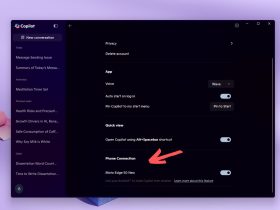
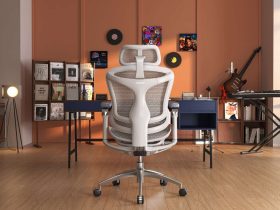
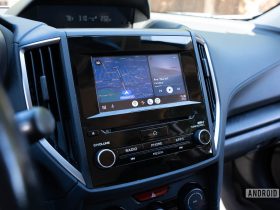
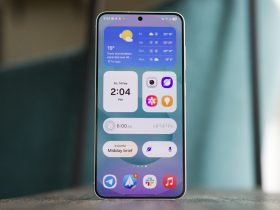

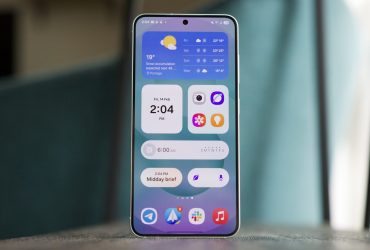
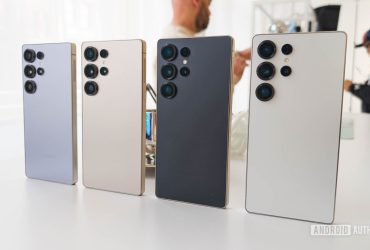
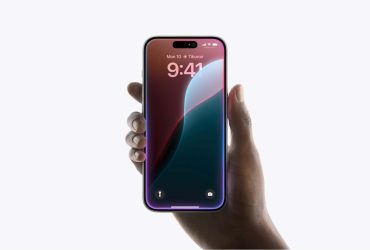
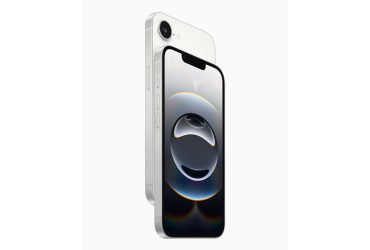
Leave a Reply
View Comments